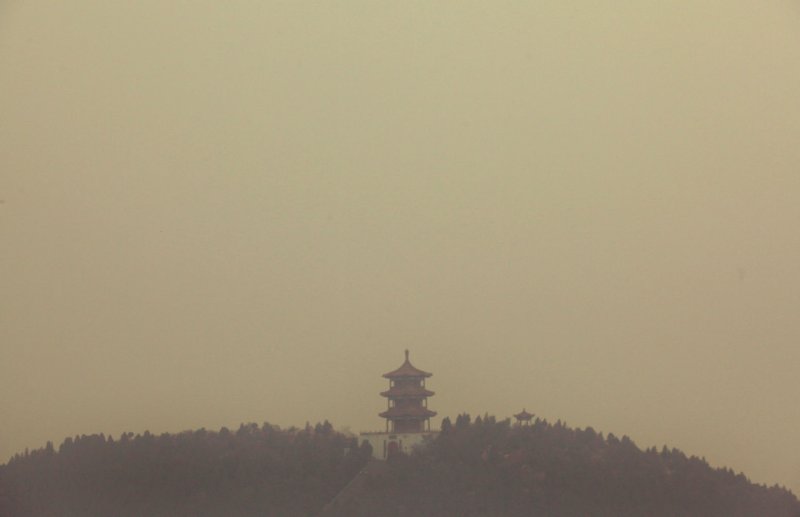1 of 2 | Heavy pollution blankets a hill-top temple and Denfeng City, Henan Province November 14, 2011. According to the World Bank, China has 16 of the world's 20 most polluted cities, with Henan (China's second most populous province) being one of the country's most polluted. Estimates suggest that close to 300,000 people die prematurely from respiratory diseases. UPI/Stephen Shaver |
License Photo
GENEVA, Switzerland, Nov. 23 (UPI) -- Greenhouse gases in the atmosphere have reached a record high and the rate of increase is accelerating, the U.N.'s Swiss-based weather agency said.
The World Meteorological Organization's Greenhouse Gas Bulletin said there was a 29 percent increase in radiative forcing -- the warming effect on the climate system -- from greenhouse gases between 1990 and 2010. Carbon dioxide accounted for 80 percent of the increase.
"The atmospheric burden of greenhouse gases due to human activities has yet again reached record levels since pre-industrial time," WMO Secretary-General Michel Jarraud said Tuesday in a release. "Even if we managed to halt our greenhouse gas emissions today -- and this is far from the case -- they would continue to linger in the atmosphere for decades to come and so continue to affect the delicate balance of our living planet and our climate."
The report said human activities such as fossil fuel burning and agriculture are major emitters of greenhouse gases that drive climate change. After water vapor, the three most prevalent long-lived greenhouse gases are carbon dioxide, methane and nitrous oxide.
Since the start of the industrial era in 1750, carbon dioxide in the atmosphere has increased by 39 percent to 389 parts per million primarily from combustion of fossil fuels, deforestation and changes in land use.
Levels of atmospheric methane had stabilized from 1999 to 2006 but have started to rise again, possibly from thawing of the methane-rich Arctic permafrost and increased emissions from tropical wetlands, researchers said.
Nitrous oxide levels in 2010 were up 20 percent from the pre-industrial era, mainly as a result of the use of fertilizers containing nitrogen, including manure, the U.N. report said.















